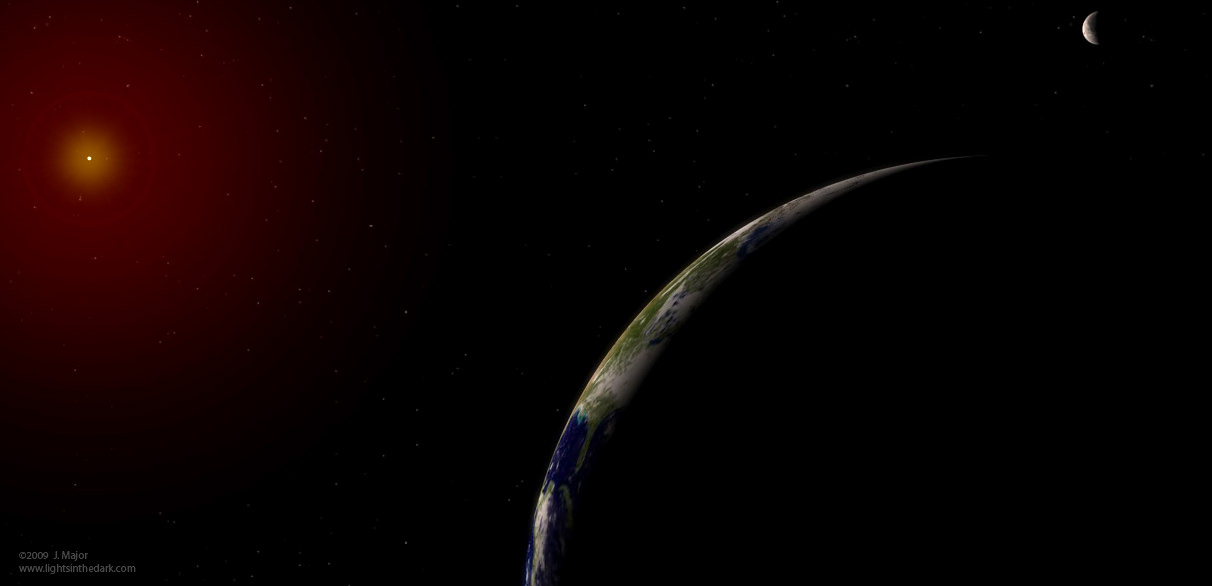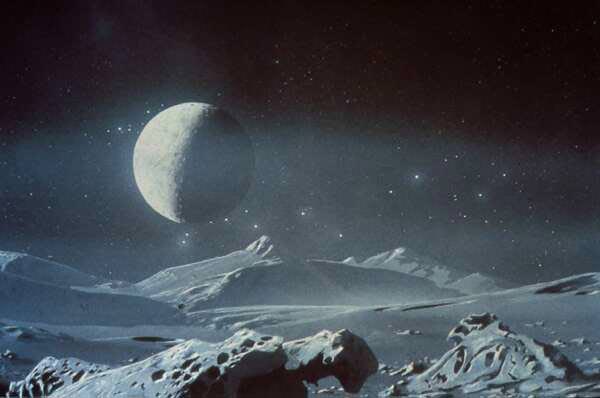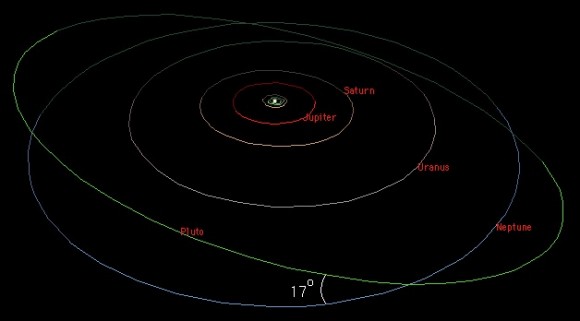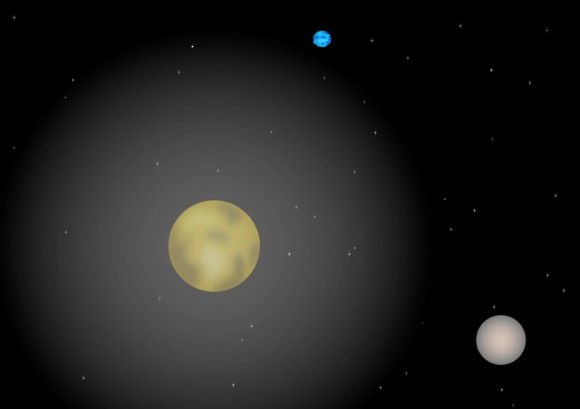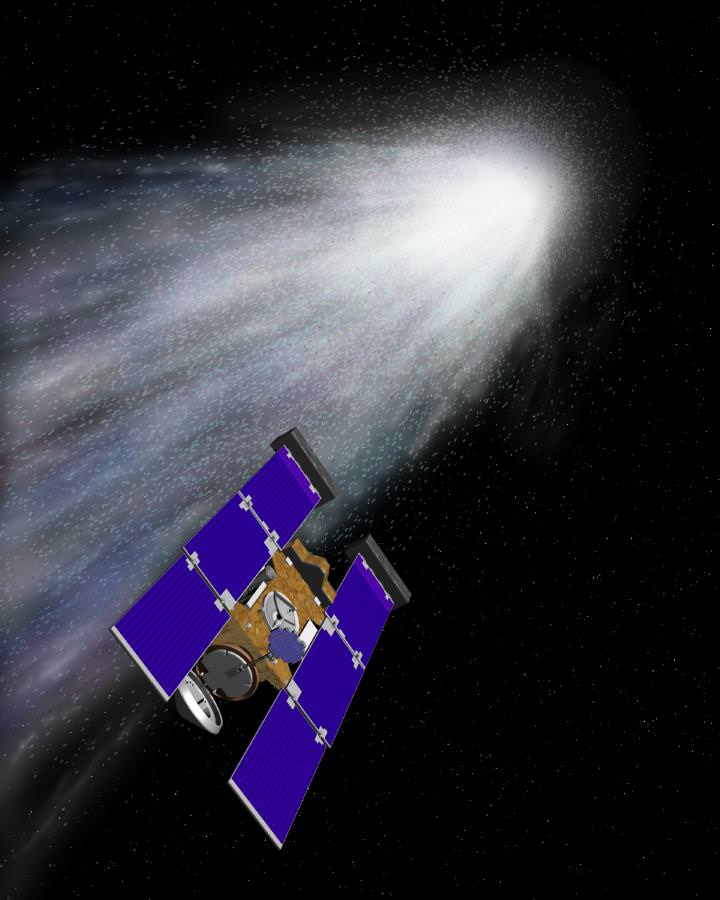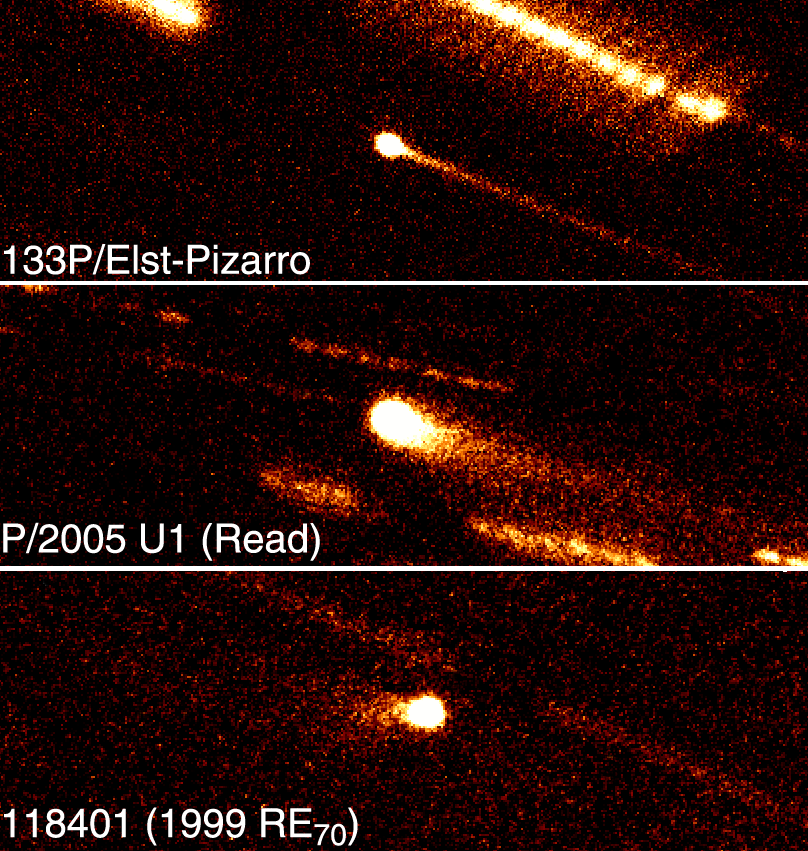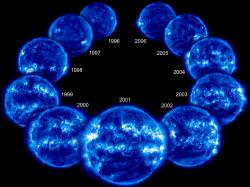[/caption]
It starts out innocently enough: a small speck against a field of background stars, barely noticeable in the image data. But… it’s a speck that wasn’t there before. Subsequent images confirm its existence – there’s something out there. Something bright, something large, and it’s moving through our solar system very quickly. The faint blur indicates that it’s a comet, an icy visitor from the outermost reaches of the solar system. And it’s headed straight toward Earth.
Exhaustive calculations are run and re-run. Computer simulations are executed. All possibilities are taken into consideration, and yet there’s no alternative to be found; our world will face a close encounter with a comet in mere months’ time. Phone calls are made, a flurry of electronic messages fly between computer terminals across the world, consultations are held with top experts in the field. We are unprepared… what can we do? What does this mean for civilization as we know it? What will this speeding icy bullet from outer space do to our planet?
The answer? Nothing.
Nothing at all. In fact, it probably won’t even be very interesting to look at – if you can even find it when it passes by.
(Sorry for the let-down.)
There’s been a lot of buzz in the past several months regarding Comet Elenin, a.k.a. C/2010 X1, which was discovered by Russian astronomer Leonid Elenin on December 10, 2010. Elenin spotted the comet using a telescope in New Mexico remotely from his location in Lyubertsy, Russia. At that time it was about 647 million kilometers (401 million miles) from Earth… in the time since it has closed the distance considerably, and is now around 270 million km away. Elenin is a long-period comet, which means it has a rather large orbit around the Sun… it comes in from a vast distance, swings around the Sun and heads back out to the depths of the solar system – a round trip lasting over 10,000 years. During its current trip it will pass by Earth on October 16, coming as close as 35 million km (22 million miles).

Yes, 22 million miles.
That’s pretty far.
Way too far for us to be affected by anything a comet has to offer. Especially a not-particularly-large comet like Elenin.
Some of the doomy-gloomy internet sites have been mentioning the size of Elenin as being 80,000 km across. This is a scary, exaggerated number that may be referring to the size of Elenin’s coma – a hazy cloud of icy particles that surrounds a much, much smaller nucleus. The coma can be extensive but is insubstantial; it’s akin to icy cigarette smoke. Less than that, in fact… a comet’s coma and tail are even more of a vacuum than can be reproduced in a lab on Earth! In reality most comets have a nucleus smaller than 10km…that’s less than a billionth the mass of Earth (and a far cry from 80,000 km.) We have no reason to think that Elenin is any larger than this – it’s most likely smaller.
Ok, but how about the gravitational and/or magnetic effect of a comet passing by Earth? That’s surely got to do something, right? To Earth’s crust, or the tides? For the answer to that, I will refer to Don Yeomans, a researcher at NASA’s Near-Earth Object Program Office at JPL:
“Comet Elenin will not only be far away, it is also on the small side for comets. And comets are not the most densely-packed objects out there. They usually have the density of something akin to loosely packed icy dirt,” said Yeomans. “So you’ve got a modest-sized icy dirtball that is getting no closer than 35 million kilometers. It will have an immeasurably miniscule influence on our planet. By comparison, my subcompact automobile exerts a greater influence on the ocean’s tides than comet Elenin ever will.”
“It will have an immeasurably miniscule influence on our planet. By comparison, my subcompact automobile exerts a greater influence on the ocean’s tides than comet Elenin ever will.”
– Don Yeomans, NASA / JPL
And as far as the effect from Elenin’s magnetic field goes… well, there is no effect. Elenin, like all comets, doesn’t have a magnetic field. Not much else to say there.
But the claims surrounding Elenin have gone much further toward the absurd. That it’s going to encounter another object and change course to one that will cause it to impact Earth, or that it’s not a comet at all but actually a planet – Nibiru, perhaps? – and is on a collision course with our own. Or (and I particularly like this one) that alien spaceships are trailing Elenin in such a way as to remain undetected until it’s too late and then they’ll take over Earth, stealing our water and natural resources and turning us all into slaves and/or space munchies… or however the stories go. (Of course the government and NASA and Al Gore and Al Gore’s hamster are all in cahoots and are withholding this information from the rest of us. That’s a given.) These stories are all just that – stories – and have not a shred of science to them, other than a heaping dose of science fiction.
“We live in nervous times, and conspiracy theories and predictions of disaster are more popular than ever. I like to use the word cosmophobia for this growing fear of astronomical objects and phenomena, which periodically runs amuck on the Internet. Ironically, in pre-scientific times, comets were often thought to be harbingers of disaster, mostly because they seemed to arrive unpredictably – unlike the movements of the planets and stars, which could be tracked on a daily and yearly basis.”
– David Morrison, planetary astronomer and senior scientist at NASA’s Ames Research Center
The bottom line is this: Comet C/2010 X1 Elenin is coming, and it will pass by Earth at an extremely safe distance – 100 times the distance from Earth to the Moon. It will not be changing direction between now and then, it will not exert any gravitational effect on Earth, its magnetic field is nonexistent and there are no Star Destroyers cruising in its wake. The biggest effect it will have on Earth is what we are able to learn about it as it passes – after all, it is a visitor from the far reaches of our solar system and we won’t be seeing it again for a very, very long time.
I’m sure we’ll have found something else to be worried about long before then.
“This intrepid little traveler will offer astronomers a chance to study a relatively young comet that came here from well beyond our solar system’s planetary region. After a short while, it will be headed back out again, and we will not see or hear from Elenin for thousands of years. That’s pretty cool.”
– Don Yeomans
For more information about Elenin, check out this JPL news release featuring Don Yeomans, and there’s a special public issue of Astronomy Beat, a newsletter from the Astronomical Society of the Pacific, that features David Morrison of NASA’s Ames Research Center discussing many of the misconceptions about Elenin.
An updated chart of Elenin’s orbit and statistics can be viewed here.
Top image © Jason Major

